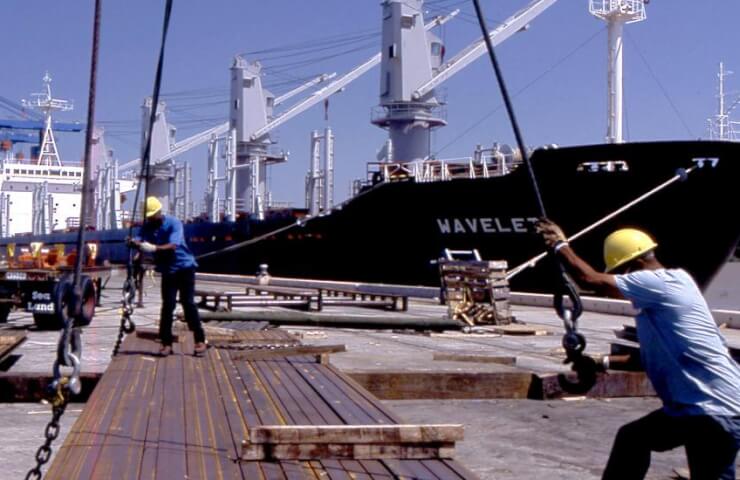With Ukraine's steelmaking infrastructure destroyed, idle, or under Russian control, the Black Sea export market is unlikely to return to pre-war patterns anytime soon, and prices in the region will predominantly reflect Russian exports for the foreseeable future, S&P said, citing to its sources.
Ukrainian steel exports to the spot market, while continuing despite the devastating effects of the Russian invasion, have declined significantly in both volume and product mix. At the same time, the Black Sea ports remain unused by Ukrainian steel producers.
According to Worldsteel, in January-November, production in Ukraine amounted to 6.16 million tons of liquid steel, which is 69% less than in the past year. Following the destruction last year of Azovstal and the Mariupol Iron and Steel Works, the two main plants owned by the Metinvest Group, steel production in Ukraine will remain well below pre-war levels.
However, slight sales of iron ore, pig iron are expected and finished steel products, mainly transported domestically and sold to Europe or shipped from ports to the EU, will continue into 2023.
Export volumes are expected to decline further after ArcelorMittal Kryvyi Rih, one of the main exporters of commercial pig iron in Ukraine, came under rocket fire in early December and subsequently shut down its blast furnaces. Sources say continued Russian bombing and disruptions to Ukraine's electricity and distribution networks will continue to undermine the local steel industry.
The impact of the war is clearly visible in Ukraine's exports to its main Black Sea market, Turkey. Export of semi-finished products from Ukraine decreased to 164 thousand tons in January-November compared to 1.417 million tons a year earlier. At the same time, pig iron exports fell to 148,000 tons from 439,000 tons.
S&P sources also stressed that Ukrainian exports to Turkey often come from the Russian-controlled Donbas in eastern Ukraine, and not from Zaporozhye or Kryvyi Rih region.
Russian exporters are eyeing Asian markets
At the same time, the Russian steel industry is also experiencing the impact of the war: producers have reduced production volumes due to a sharp loss of export markets and a decrease in domestic demand .
According to Worldsteel, crude steel production in Russia in January-November amounted to 65.88 million tons, which is 7% less compared to the same period last year.
Russian exporters steels still active on the Black Sea spot market are cutting production, boosting domestic sales, or trying to export more to Asia and maintain their strong position in the Turkish market, where the impact of Western sanctions is indirect.
While the export of Ukrainian pig iron to Turkey in January-November 2022 decreased by 291 thousand tons, Russian exports increased by 263 thousand tons. In terms of semi-finished products, Russian exports to Turkey fell by about 10% year-on-year to 3.2 million tons as some Turkish buyers instead opted for material of non-Russian origin and some Russian exporters diverted more volumes to the Far East. East and Southeast Asia.
One of the Russian pig iron sellers told S&P that the country's exports will not grow unless there is a "boom" in demand from China.
"If China nothing happens, everything will be as it was in 2022,” he said, adding that the export of Russian iron and steel cannot grow if the ruble remains strong against the US dollar.
“ The ruble exchange rate can be at least 70-75/dollar, then suppliers became interested in exporting. When the ruble is 60-65, suppliers leave the market,” said a Russian pig iron seller.
The Russian currency, which traded at 74-77 per dollar during the year before the invasion of Ukraine, in the second half of 2022 strengthened to about 60 per dollar. Only in December, the ruble weakened again to 70 per dollar, at the end of the year at 73.50 per dollar, according to Euronet.
Russian export prices on the Black Sea market will largely depend on demand from its main sales markets, including Turkey and Asia, trade sources say. They added that prices in Turkey are likely to be affected by persistently weak demand for its finished products, especially for exports. This will continue to put pressure on Russian mills as the main supplier of raw materials for Turkish re-rollers and other processing companies. High production costs are expected to continue to be a headache for Turkish mills, while domestic demand for steel is forecast to remain low.




